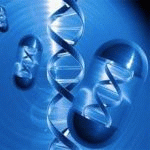Biotechnology
|
1 august 2015 13:20:07 |
| Model-driven intracellular redox status modulation for increasing isobutanol production in Escherichia coli (Biotechnology for Biofuels) |
|
Tweet Background:
Few strains have been found to produce isobutanol naturally. For building a high performance isobutanol-producing strain, rebalancing redox status of the cell was very crucial through systematic investigation of redox cofactors metabolism. Then, the metabolic model provided a powerful tool for the rational modulation of the redox status.
Results:
Firstly, a starting isobutanol-producing E. coli strain LA02 was engineered with only 2.7 g/L isobutanol produced. Then, the genome-scale metabolic modeling was specially carried out for the redox cofactor metabolism of the strain LA02 by combining flux balance analysis and minimization of metabolic adjustment, and the GAPD reaction catalyzed by the glyceraldehyde-3-phosphate dehydrogenase was predicted as the key target for redox status improvement. Under guidance of the metabolic model prediction, a gapN-encoding NADP
+
dependent glyceraldehyde-3-phosphate dehydrogenase pathway was constructed and then fine-tuned using five constitutive promoters. The best strain LA09 was obtained with the strongest promoter BBa_J23100. The NADPH/NADP + ratios of strain LA09 reached 0.67 at exponential phase and 0.64 at stationary phase. The redox modulations resulted in the decrease production of ethanol and lactate by 17.5 and 51.7% to 1.32 and 6.08 g/L, respectively. Therefore, the isobutanol titer was increased by 221% to 8.68 g/L.
Conclusions:
This research has achieved rational redox status improvement of isobutanol-producing strain under guidance of the prediction and modeling of the genome-scale metabolic model of isobutanol-producing E. coli strain with the aid of synthetic promoters. Therefore, the production of isobutanol was dramatically increased by 2.21-fold from 2.7 to 8.68 g/L. Moreover, the developed model-driven method special for redox cofactor metabolism was of very helpful to the redox status modulation of other bio-products. |
| 101 viewsCategory: Biotechnology |
 Alleviation of carbon catabolite repression in Enterobacter aerogenes for efficient utilization of sugarcane molasses for 2,3-butanediol production (Biotechnology for Biofuels) Alleviation of carbon catabolite repression in Enterobacter aerogenes for efficient utilization of sugarcane molasses for 2,3-butanediol production (Biotechnology for Biofuels)Evaluation of Physarum polycephalum plasmodial growth and lipid production using rice bran as a carbon source (BMC Biotechnology) 
|
| blog comments powered by Disqus |
MyJournals.org
The latest issues of all your favorite science journals on one page
The latest issues of all your favorite science journals on one page



